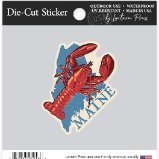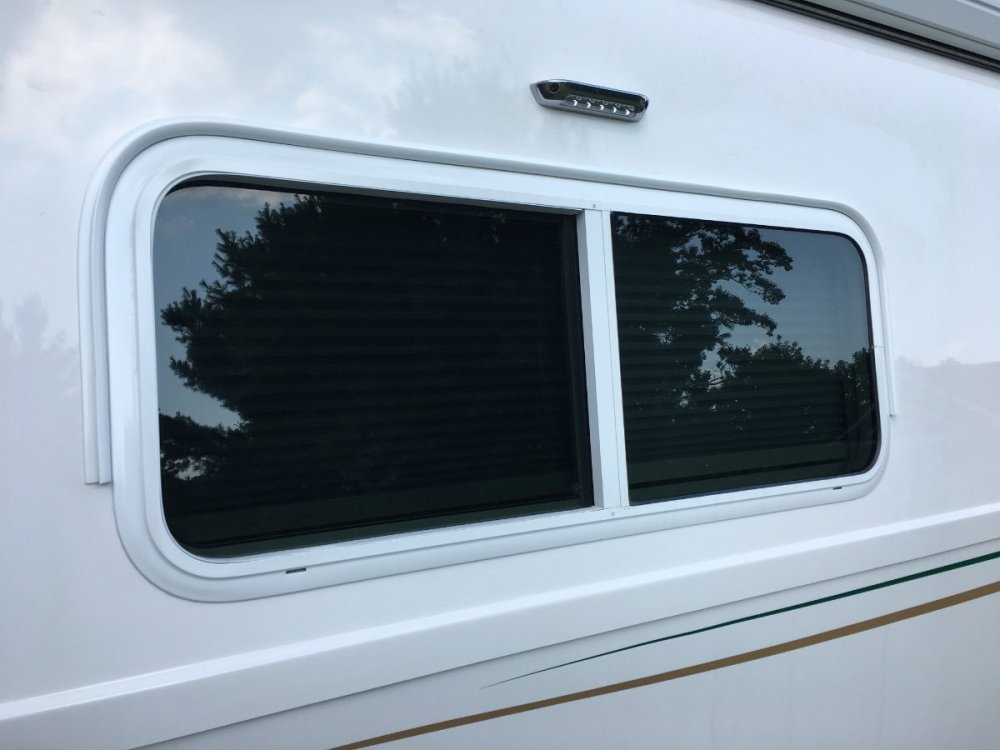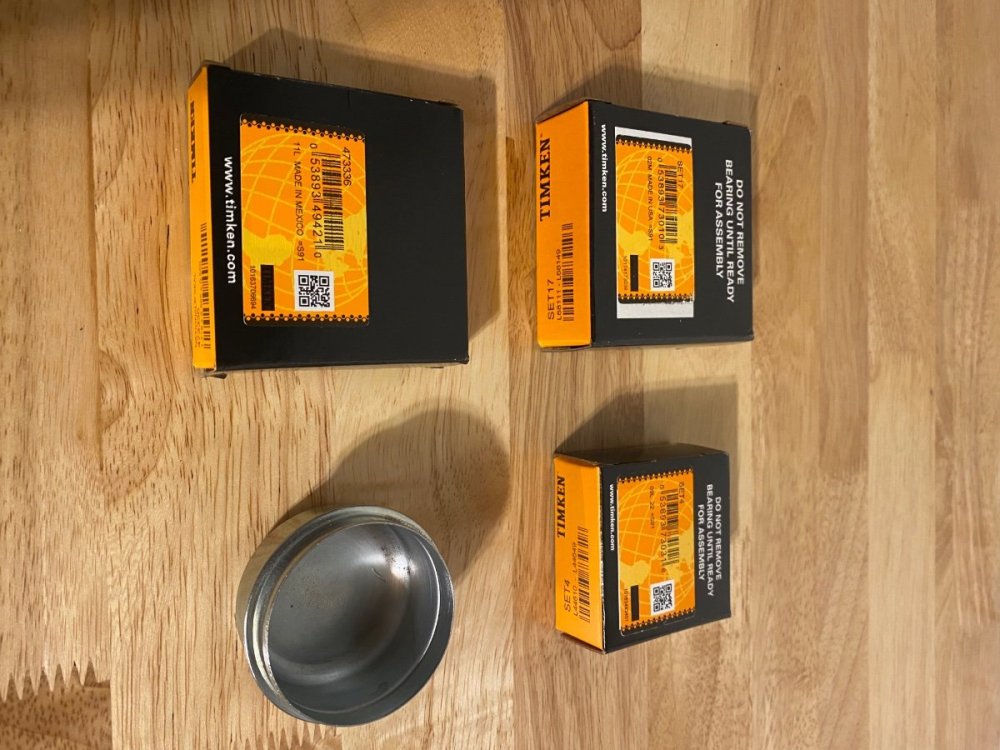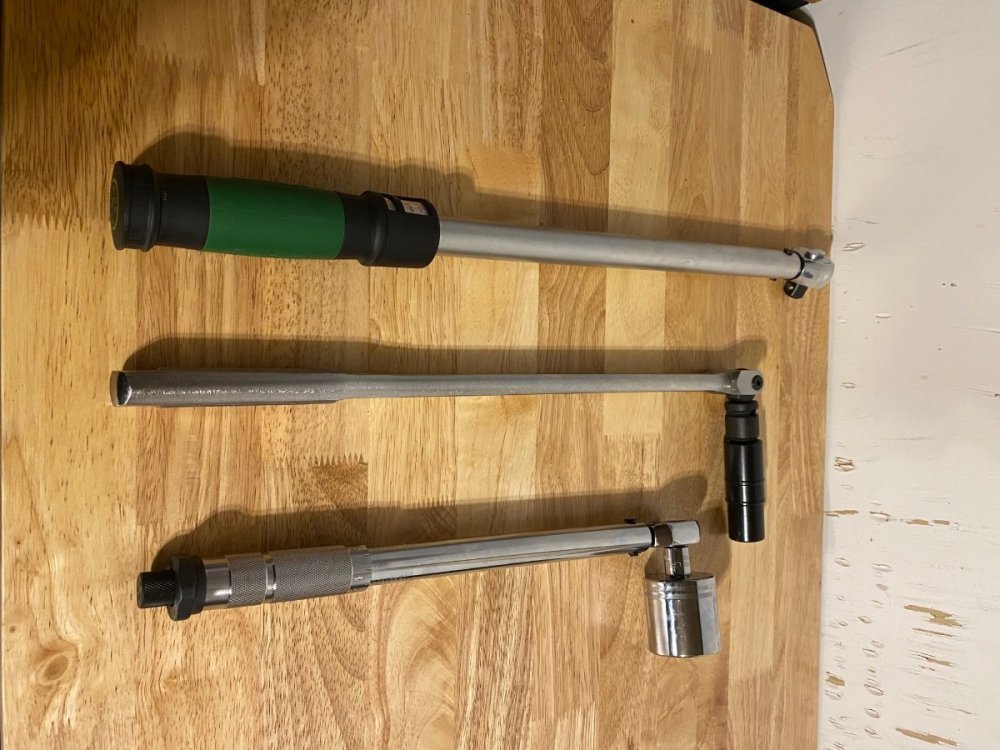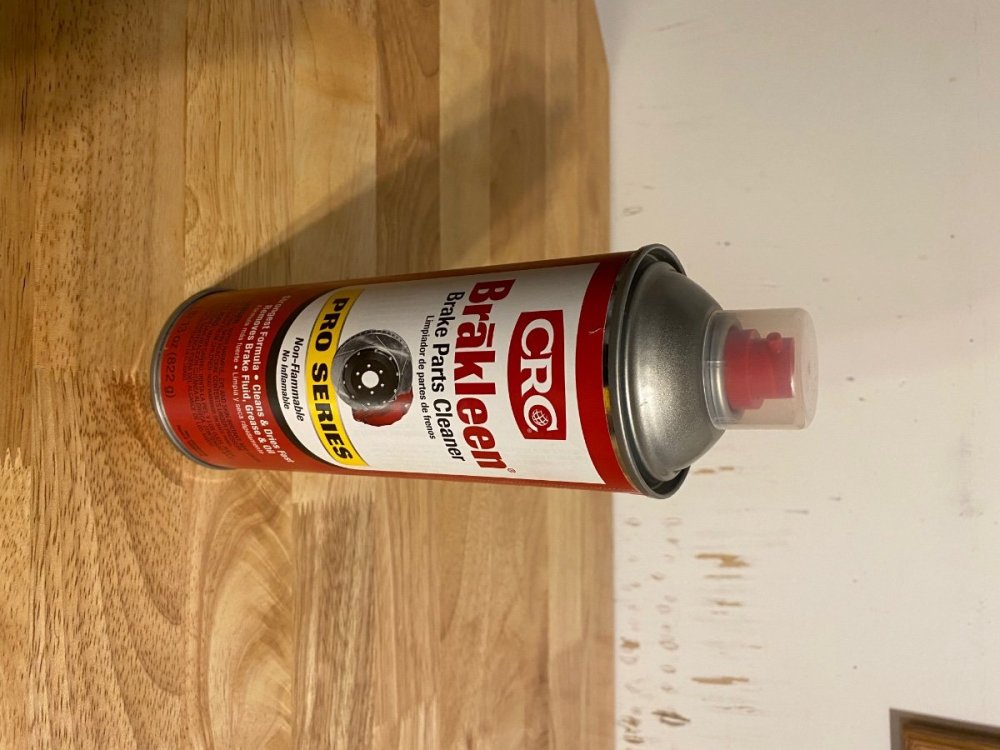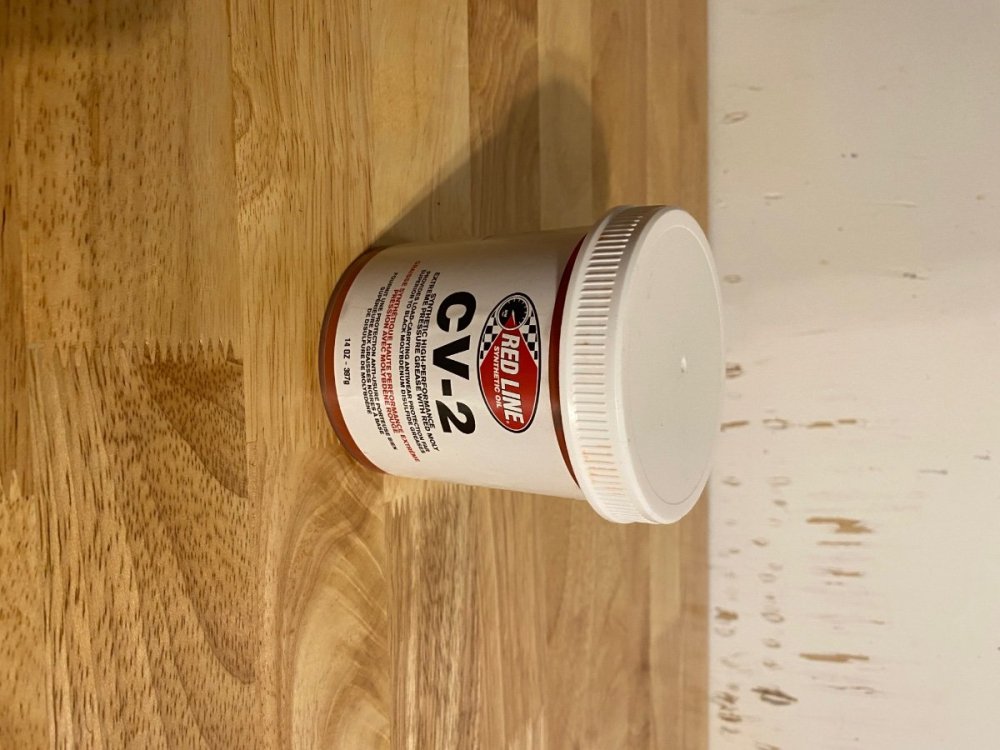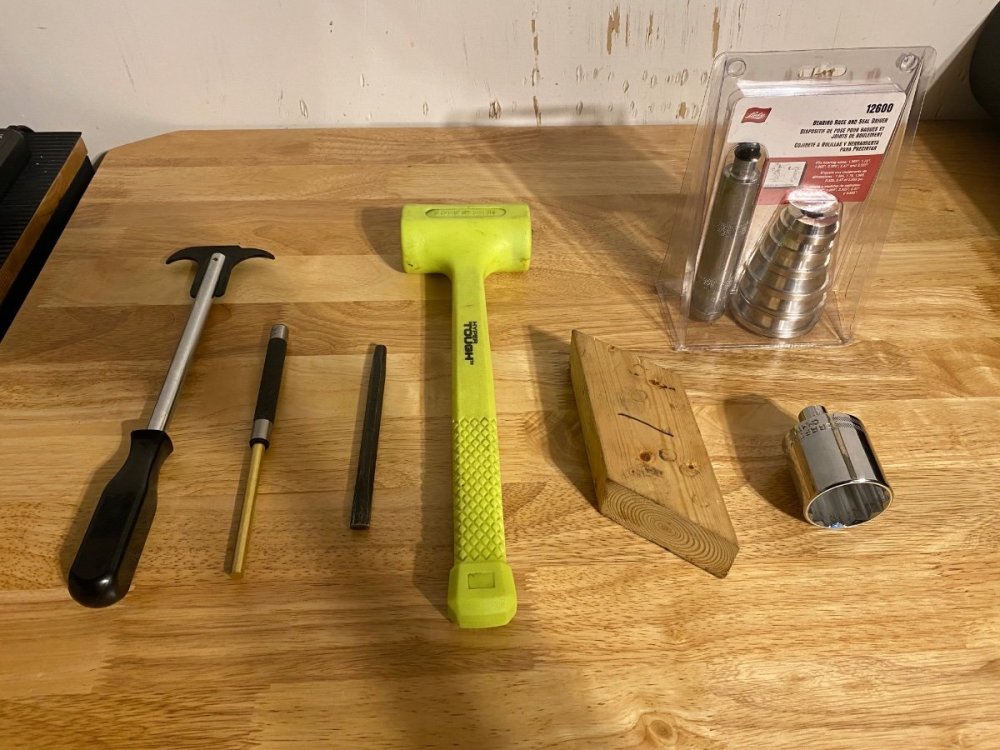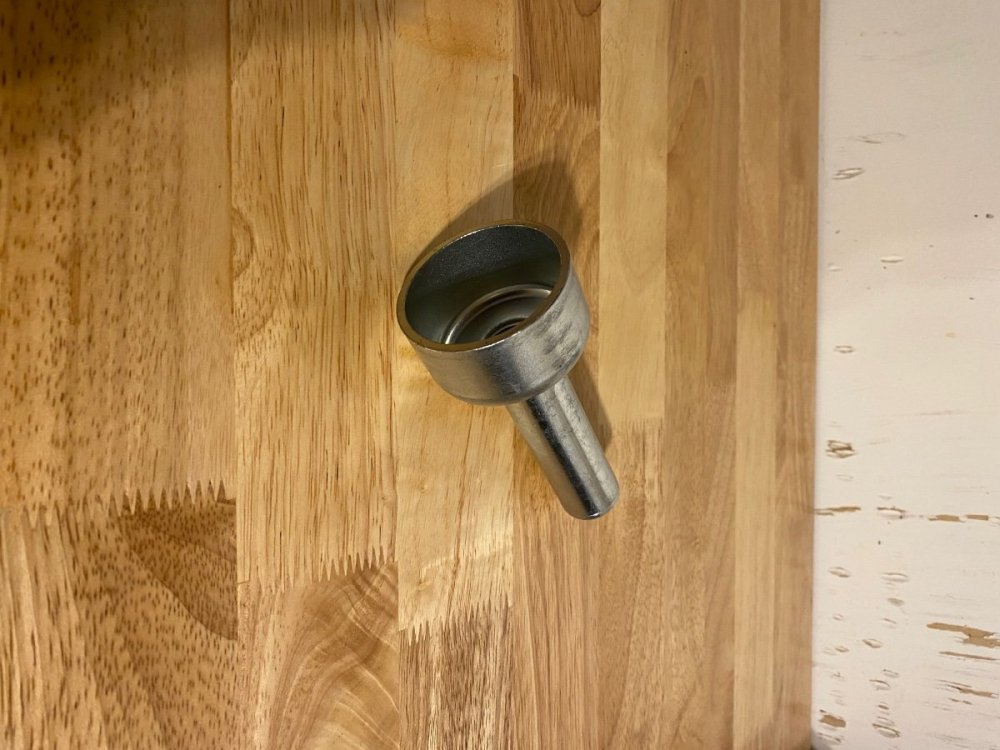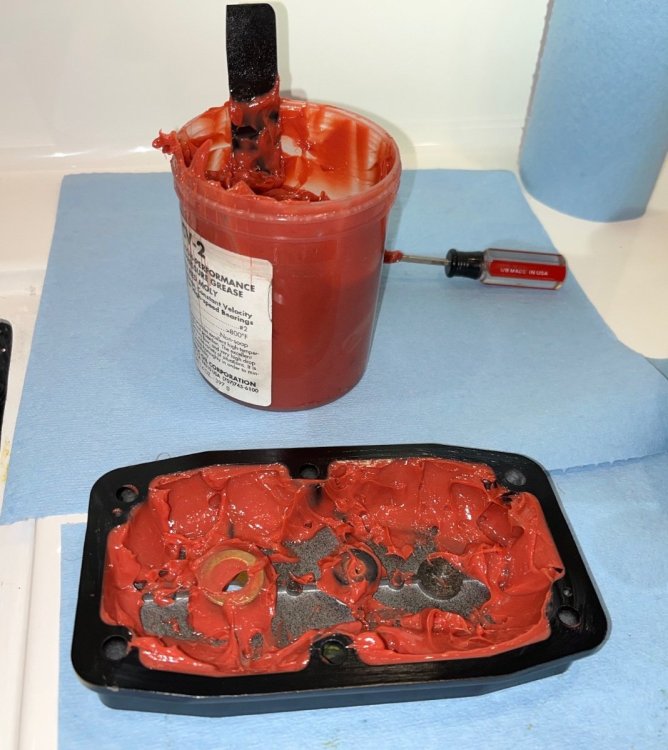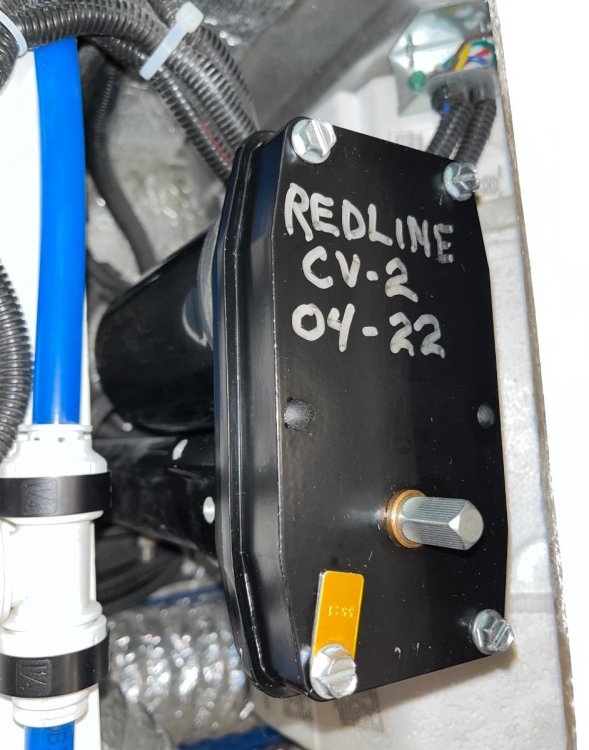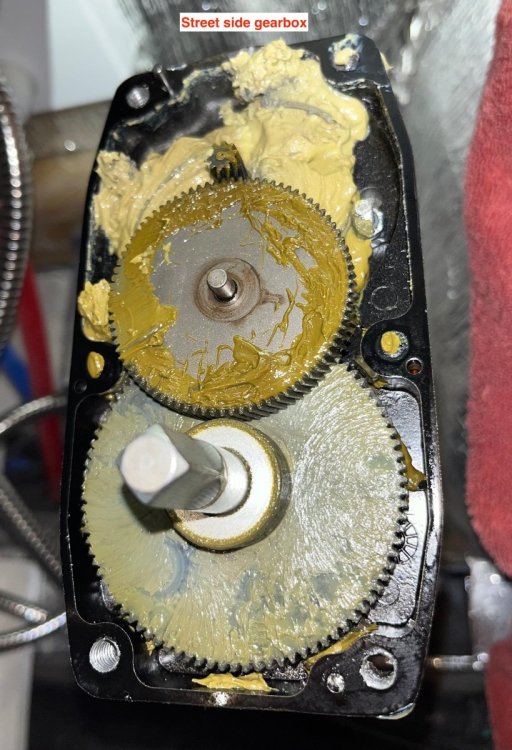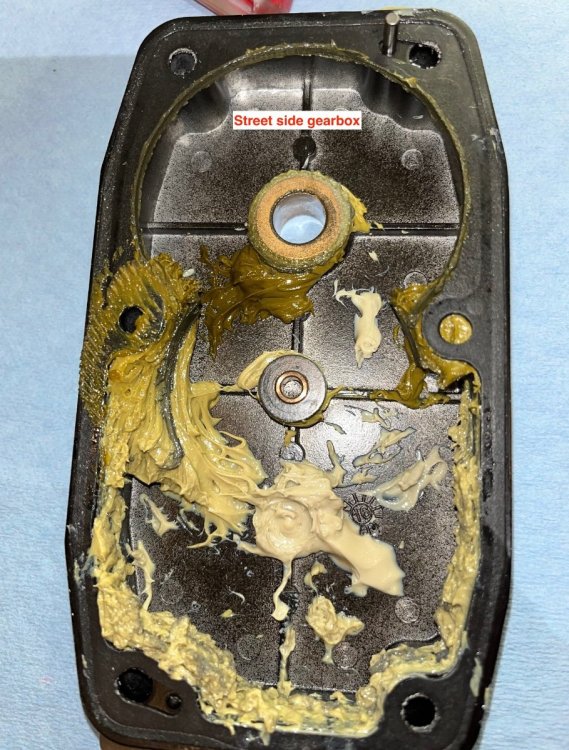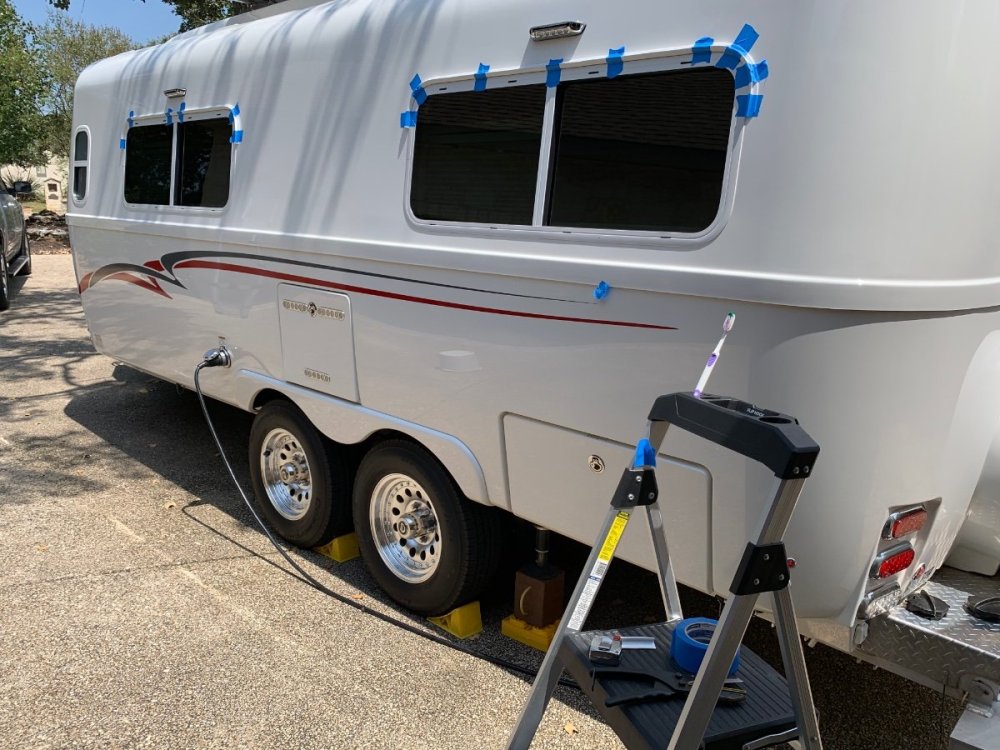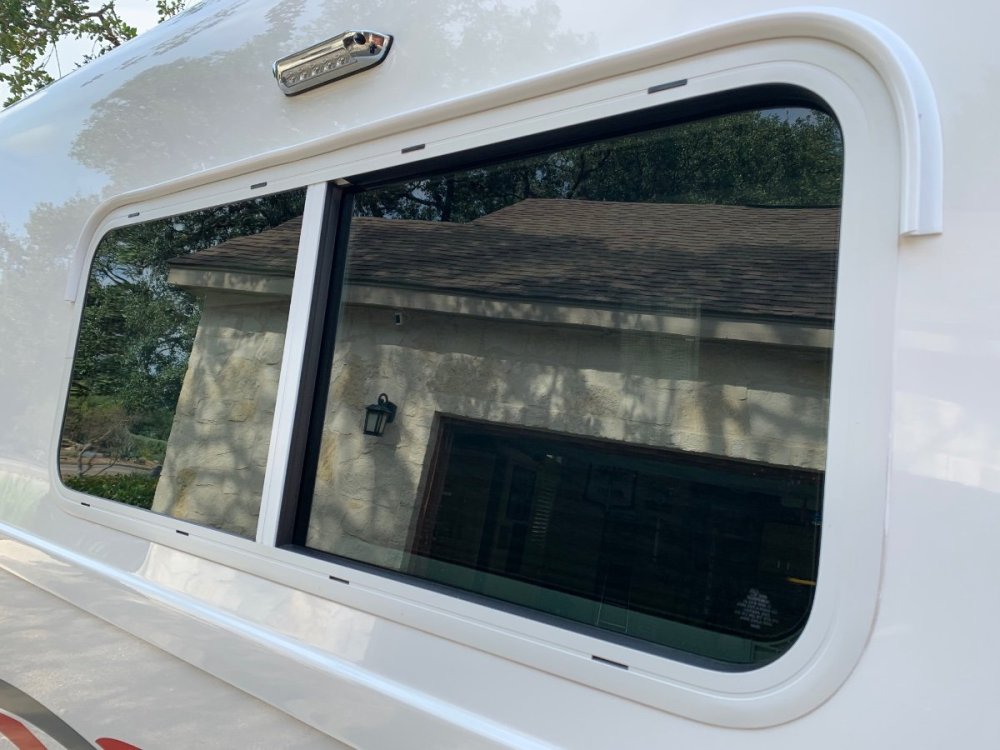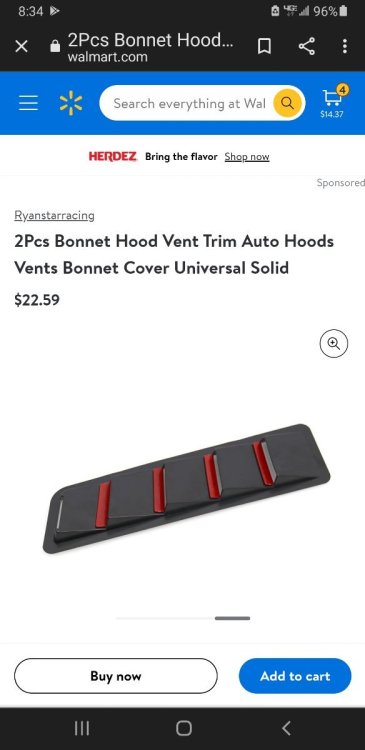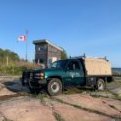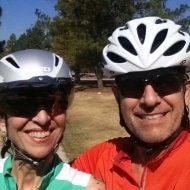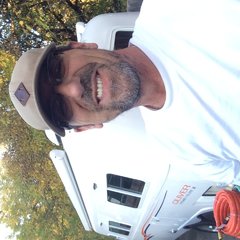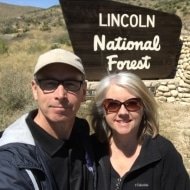Leaderboard
Popular Content
Showing content with the highest reputation on 04/18/2022 in all areas
-
I don’t even know when Airxcel (makers of the Maxxair Window/Maxx Louvered Window Vent) stopped production (maybe 2015) but I was one of the lucky ones who purchased a couple from Little House Customs for use on my Casita. Right before putting OCD for sale, I removed them for use on the ILOVHER. I consider myself lucky as there are still current threads about owners with radius style sliding windows who want the ability to open the windows in the rain for that much needed airflow. The company apparently doesn’t see the need to start production and maybe our fiberglass market is just too small to justify a rebirth. Occasionally, I’ll see a couple pop up on Ebay but they go for a mint..sometimes upwards of $150 plus shipping! I have followed the topic with interest because one of my vents is spider cracking..probably from UV exposure and vibration over ten years. It’s still hanging in there with a bit of FlexSeal tape! I stumbled across a gentleman on Fiberglassrv who was 3D printing a drop-in two piece vent in three colors and sent me info on his prototype. Here is the link to the discussion and a picture of his 3D design: https://bit.ly/3JNotT5 I was emailing him back and forth in September of 2020 but my understanding is that he’s dropped off the planet. He was charging right around $80 for one. I’m not sure how many people were able to purchase one but I never did. I decided to put my mod brain to work and came up with the design below. I will eventually make another one for the curbside. I really enjoyed the process and it wasn’t terribly expensive to do! (about $50) in materials. PM me if you’re interested in the material list.. The vent is made out of a black boat louvered ventilator. I got the idea from a friend who had something similar on the hood of his ATV. I used a piece of ⅛” smoked plexiglass and the window screen as a template. The plexi was cut with a standard Dremel tool cutting wheel. The edges were trimmed with rubber edge trim and the vent is seated with a waterproof nanotape. The only downside is having to install the vent when it’s raining outside and removing it before travel…that’s where the Maxxair vent had the edge! You simply slide the whole thing upwards into the upper track and it fits snug and water-tight. The other bonus was that I didn’t have to add screening as the current screen still closes with it in place. This was really fun to do and I’m super stoked to test it out!8 points
-
Hello all, First time poster, long time browser. We pick up our Ollie Elite II in about a month. This topic piqued my interest as a hybrid truck owner. The Ike test from TFL is just a good benchmark on the capability, especially at elevation. Perhaps in 10 years we'll be able to compare range and towing for full EVs, but we're not there yet. We have a Ford F150 Powerboost Lariat and I think it's a great all around truck for our purposes. 1) Towing an Ollie. 2) Commuting to work a few days a week (30 mi each way). 3) We live at elevation in CO (6,200ft) where a turbo is ideal for hauling up mountain passes (such as the Ike, which I've done countless times). We looked at RAM and others, including Diesels of all variations, and it came down to cost benefit and fit. While it would be nice to have a HD truck for the added payload, I just couldn't justify it for various reasons; can't fit in our garage, too tall for parking at work (can't commute with it), diesel maintenance, and the premium over a gasser. I wanted something that would be a good TV and a decent commuter. The Powerboost fits the bill perfectly. Our truck has a 30 gallon gas tank (standard on all F150 Powerboosts). Max Trailer tow package. 430hp/570 torque. 1425 Payload. It gets about 24 mpg normal commute driving, and sometimes I get 30 mpg if I baby it along. Usually 30mpg to work and 22mpg on the way back. Stop-and-Go traffic is a breeze, as it's mostly in EV mode and will drive itself in traffic if I choose to allow it. When I need to tow, the truck performs well, plenty of power. While it's not much weight, I towed our Casita and got 15-17 mpg on the flats. I'm expecting 10-14 with the Ollie Elite II.4 points
-
I have the RV lock on my Oliver. I was having trouble with it (as was 4 years old) and I am the second owner. I would recommend you purchase from RV lock directly. They are great to work with. They helped me trouble shot my RV lock problem. At first they thought it was one of the computer boards and sent me a new one at no cost even though I was the second owner. That did not fix the problem so they recommended their new upgraded inner handle plate which they sold me. It has better contacts then the older model. It was shipped to me and I got it in 2 days. This corrected my problem. This company is top notch in customer service. They will stay on the phone and guide you through any trouble shooting. I like the fact that I have three ways to unlock the lock; keys, a remote obb or the key pad.4 points
-
Yes, you are correct. It was a bittersweet transition for Char Rimer as this was to be their retirement. The good news is (and I told her this) that she couldn't have sold the trailer to someone more passionate about fiberglass and that I would do everything to keep ILOVHER in the best shape and send her photos of my travels!3 points
-
A list of the items I bought to complete the project. 1. https://amzn.to/3JVHMJU 2. https://amzn.to/45bSlqw 3. https://amzn.to/3uQgyjC I also used some Duck Nano Tape from Walmart to hold the vent in place and to be waterproof. I used these Dremel cutoff wheels https://amzn.to/3vjIjju, but you can use whatever tool necessary to cut the plexiglass. Some people use a jigsaw for plexi, but I don't own one. The Dremel with a long flexible shaft made the work easy, especially for the center cutout. It did take some time to get the measurements correct but I went with 16.5" for the height. I imagine you could make the width any size you want. Please wear safety goggles and a mask as the plastic gets everywhere! Good Luck.. I'm super excited in any interest. Hopefully with the rain we're getting today, I can report back with positive results.3 points
-
Found these on Amazon https://www.amazon.com/dp/B00J9TJ1ZI/ref=cm_sw_r_cp_api_i_QWQ738ECJXPCGREKEK4W?_encoding=UTF8&psc=13 points
-
I followed up on the information you provided me last September about the Maxxair Window/Maxx clones. I posted this last month about the results. And on a positive note, I received an email from eBay about 2 weeks ago about a new Maxxair Window/Maxx up for auction and purchased it for $100 with free shipping. I haven’t installed it yet, but I do have it in my pile of this to do. Mossey3 points
-
3 points
-
3 points
-
Keep in mind how these parts are made, most likely an unskilled worker has ten seconds to shoot a measured amount of lube in one place, then the gearbox goes on to the next station. They could not spend the required time needed to hand pack it properly. And think how much money they save by not using enough grease. John Davies Spokane WA3 points
-
This was one of the first things I installed, since I do find myself traveling solo on occasion. Combined with the Anderson levelers, getting set up in camp has never been easier. Definitely one of those things that makes me say "How did I go so many years without it?"2 points
-
My plan is to replace the curbside Maxxair vent because it's failing after ten years. I have two installed now (curbside and dinette) and you're correct in needing more than one for multidirectional air flow. I'm waiting to test my new vent for any tweaks before I attempt to make another one. I would consider window vents as one of my most loved and needed mods as I've lived in my trailer for up to four and a half months at a time in all kinds of weather! One of the things that's nice is hearing the rain, having a breeze and not using that foghorn of an air conditioner! Lol2 points
-
I may someday attempt to remove and re-apply new gutters and move them further down the sides of the windows...and thanks for your assistance in the repositioning of the pix!!2 points
-
The EZ gutter above the windows was added by the previous owner of your trailer. If I recall correctly from your previous posts, you bought your trailer from the Rimer family after Ron Rimer passed away. Ron was a great guy who helped us in our decision to buy our Elite II. Ron had added that EZ gutter and during our visit with him to see his trailer he commented that fixing the lifted corners on the EZ gutter was on his to-do list. Based on Ron’s experience, when I added my EZ gutter I ran it around the top and all the way down the sides of the windows.2 points
-
Happy to share information. The Tundra is making a nice TV for our LE2 Ollie!2 points
-
I am sorry for the redundant questions on your new Tundra. I totally missed the report you linked to about your driving experience so far. Sounds like it is going well, congrats! Mossey2 points
-
This very thing has happened to me twice over the years. A phone call or Service ticket results in receiving a new grease cap and center hub "plug" within a couple of days. However, I too have resorted to heavier duty grease caps and I also carry a couple of spares with me on the road. Ones like THESE are easier to seat while out on the road. Bill2 points
-
Agreed that Dexter doesn’t say to use a new grease cap, but the caps are soft plated steel and the steel deforms a bit for a press fit into the hub when pounded into place, so the next time it’s reused it’ll have slightly less interference for the press fit and is more likely to fall out. I prefer to install new ones each time now as cheap insurance. I think a lot of the Oliver complaints about grease caps falling off are due to multiple reuses of the same grease caps over and over during service. I had one grease cap fall off within a few hundred miles after our wheel bearing repack service done at Oliver last year, and it knocked off the little logo decorative center cap as well and that was lost.2 points
-
I have not seen any Dexter requirements to replace the grease cap during routine service. HOWEVER, as verified by both Jason and Dexter, they seem to have in service more than few grease caps that are defective and have a propensity of falling off. For our Ollies, they get trapped inside of the wheel rim decorative cover where they rattle around. With a few miles, they will bash out the wheel rim small "hub cap" (another reason to RTV the decorative wheel hub caps to the decorative wheel rim decorative cover as JD has suggested in a previous post!). Apparently more than a few Dexter OEM grease caps have a diameter is just a tad too small and even if properly applied, can come off. This will expose your wheel bearings to dust and moisture... especially if you have chosen to run your rig without the little hub cap as some have chosen to do to facilitate monitoring bearing hub temperature with a heat meter. The solution is to purchase heavier duty grease caps. Or call Dexter and they may send you a set. If not, I like the heavy duty NAPA version.2 points
-
The Dexter video is very helpful. https://youtu.be/GnH-h3W9XvI As mentioned before the complete bearing sets must be replaced, you can’t leave the old races in the hub. And the seal and grease cap must also be replaced. So new bearings, seal and grease cap on each axle. Here’s the tools/etc. that I used for my recent replacement of the bearings on all 4 wheels: Breaker bar & 3/4” lug nut socket for loosening the lug nuts to remove wheel. Screwdriver to pry off old grease cap. You may have either a spring clip or cotter pin as the axle nut retainer. Mine have the spring clip that can be reused. Cotter pins should be replaced. The axle nut should come off by hand since it’s only supposed to be finger tight at final assembly. Seal puller from Harbor Freight to remove old seal. Brass and steel punches to drive out old outer races. Brakleen to remove all old grease from hub and axle spindle, and clean the inside of the brake drum while you’re at it. Also check your brake pad thickness while you have the brake drum off, Dexter says 1/16” minimum thickness for the pads. A bearing driver set to install the new outer races. A good high quality grease to pack the new bearings. A dead blow mallet. A wooden block to install the new seals. A 1-1/2” socket for the axle nut. Torque wrenches for the axle nut and lug nuts. I use two different ones because of the difference in torque settings. The axle nut is to be torqued to 50 ft-lbs. to seat the bearings, then backed off and finger tightened, then install the retainer clip or cotter pin. The lug nuts are 120 ft-lbs. I don’t have one single torque wrench that can cover that range for the axle nuts and the lug nuts, so two torque wrenches in my tool box. Grease cap driver tool to install new grease caps properly. Follow the Dexter video. And I carry all of this with me, including spare bearings, seals and dust caps, in my road tool kit, along with a heavy duty scissor jack, a full ratchet/socket set, small air compressor, and other common hand tools. Flat tires and wheel bearing failures have been common points of failure that leave people stranded. I like to be prepared. Mad Max was the Road Warrior, call me “The Road Worrier” 🙂.2 points
-
Grease the upper cover: Set the gear and shim down over the lower part, align the gasket and install the cover and the four bolts. Tighten the three set screws firmly, be careful they are steel in aluminum. Clean off the top and make a record of the service: Test the jack for proper operation and shift all your tools and stuff to the other side. My street side gearbox looked very similar - too little lube, some gear wear: Each jack took a couple of hours, most of that time was cleaning out the old contaminated grease. A future service might be a whole lot faster, you could just take a look and add some more CV-2 if needed. I do NOT recommend leaving the old white lithium grease in place, it will not mix well with the full synthetic, and you should get all those black metal particles out!. John Davies Spokane WA2 points
-
You mentioned that you already replaced the battery in your tow vehicle, was the alternator checked out as well? It may not be charging your tow vehicle battery properly.1 point
-
SeaDawg asked the first thing I thought about. I personally would not run my refrigerator on DC, would run it on LP gas.1 point
-
What batteries do you have? Solar? Are you running the fridge on dc or gas or off when traveling? Tow vehicle? Most modern vehicles simply won't start with a too low battery. Cabin lights and radio may come on, but you may just get a click or nothing when trying to start. I'd also suspect an ignition switch or starter issue, if your truck is fairly new.1 point
-
1 point
-
Thanks for the info, routlaw, my guess is just about on point with the MPGs while towing. I also wish the Hybrid portion would apply to towing, but I think the battery capacity is a bit small to provide any meaningful towing power as it is. While not towing, the EV works very well around town, in parking lots, and in traffic especially. At the same time, able to tap into the rocket of the ecoboost engine. Whoooboy.. that is fun.1 point
-
1 point
-
I would ask for my money back. If a weapon was supposed to be in the box and was deleted... you should be compensated. Dang!... now you've got me wondering what kind of weapon was in there. 1911? Knife? Ma Deuce? ... no the box would have had to be bigger. Sorry you got cheated out of the bonus weapon.1 point
-
"They" could be just "messin" with you🙄. Bill1 point
-
That’s really odd. The term “deleted weapon” is usually used in reference to online gaming when players lose a virtual weapon in a game like Call of Duty or Halo.1 point
-
1 point
-
I had the same problem early on and I don’t remember if someone on the forum provided some guidance or I noticed on my own. Try it, you might like it!😉 Mossey1 point
-
BTW, I did add some rubber edging to the inner part of the vent as well. This way if you're too zealous in shutting the stationary window, you'll have a bit of bumper. Also, the vent can be kept inside a cabinet and is easily installed from the inside where you'll stay dry. Here is a video of it in action. I will be at the rally in May if anyone wants to see it in person! Thank you all for your kind words! I've been dreaming of this mod for a long time. 20220418_110002.mp41 point
-
1 point
-
Nice write up John. Thank you for taking the time to do this. I will be done ng this job ASAP. Cheers, PerryG1 point
-
FrankC, thanks for the informative info and your write up of tools needs is very helpful! Thanks!1 point
-
I have Verizon. No issue logging in1 point
-
They likely make even more by our having to replace them if we don't follow your lead!1 point
-
Watch RV Lcck's website for sales. They often offer 25% off, making the lock the cheapest I could find online. I had a issue with my lock and their customer service was great, walking me thru diagnosis then sending me a part to replace the broken part. Highly recommend them1 point
-
Thanks for the tutorial John. Very helpful. The jacks are one of my next maintenance projects this summer.1 point
-
If one asked me this question a year ago, I would have said probably not. I have a different opinion today. Depending on the vehicle, I have anecdotal evidence that some vehicles may benefit from a high performance air filter when towing. This includes my vehicle. By way of history, I have used a washable K&N air filter in my tow vehicle since I purchased it in 2004, only substituting a stock pleated air filter when removing and cleaning my K&N. I switched to the K&N only to save money on replacement air filters. I never really believed in the claims of more engine power. I was somewhat concerned in the beginning that the K&N wouldn't protect my engine as well as the stock air filter but I was wrong. My decision paid off as I went almost 200,000 miles on my first K&N filter. I now have 225,000 miles on the engine and the engine still burns less than 1/2 quart of oil every 5,000 miles between oil changes. I have saved $100s of dollars over the last 20 years by being able to periodically wash my air filter rather than buying a new one. But I never bought into the "more engine power" hype. Until recently. Almost any tow vehicle rated to tow the weight of an Ollie will perform acceptably on flat highways at sea level. Where the marginal vehicles like mine struggle is climbing hills and performance can decline rapidly as ambient air temperatures rise and/or altitude increases. This is simply due to the fact that warm air is less dense than cold air and air density (i.e., air pressure) drops as altitude increases. Less dense air means less oxygen in the combustion chamber and lower combustion temperatures. Of course, no air filter will compensate for lower air density (that is where turbochargers come in). However, if the air filter is at all restrictive of airflow required to achieve the full compression ratio in the cylinder, then that engine will lose even more power on top of the power loss due to the air being less dense. In most driving situations, even a clogged air filter will still pass all the air that the engine requires because most driving conditions (cruising on the flats in overdrive) don't draw on much of the power or torque capabilities of the engine. Marginally under-powered tow vehicles on the other hand occasionally seek to draw on the full capabilities of the engine when climbing grades and accelerating to the speed of traffic. This is largely because the engines in marginal towing vehicles often need to access the full torque capability of the engine on hills which means by definition that they need to operate at higher engine revolutions per minute (RPM). As engine RPM increases, the volume of air that must pass through the air filter increases linearly. For example, an engine that requires airflow of 50 cubic feet per minute (cfm) at 1500 RPM will require airflow of 100 cfm at 3,000 rpm, or twice as much airflow. in this case, if the air filter is restricting airflow to a little less than 100 cfm, the engine will be starved of oxygen at its factory designed compression ratio and it will have less power. This is not really a problem on flat roads at sea level, but can impair power on hills, especially at higher altitude and ambient temperatures which further reduce oxygen due to less dense air to start with. Last summer I spent time up in the North Cascades of Washington and got ready to pull my LE II over the North Cascades highway from east to west. Thinking that I was way overdue to wash my K&N filter, I stopped at a NAPA store in Winthrop, WA and bought a brand new OEM style pleated filter. In fact, I upgraded from standard NAPA filter to their "Gold" filter that claimed better engine protection (probably with greater restriction in air flow). I then started up the pass and it was like I was driving a different vehicle. I didn't notice a difference until I had to slow down for 30 mph curves on a 4%-5% grade and found if was more difficult to accelerate on the grades from the lower speed. I was baffled that the engine wasn't performing as well as expected, considering the ambient temperature was only in the upper 50's and altitude was under 5,000 feet. When I got home, I installed a new K&N filter and my performance was restored on my next trip towing the Ollie. Was this all in my imagination. Possibly but I don't think so. Might other marginal tow vehicles benefit from using a high performance (high flow) air filter? I don't know. The air filter in my vehicle is pretty small to start with. I am convinced though that my vehicle's performance suffers under full load when using a stock media air filter. Those Ollie owners that have more than adequate tow vehicles are unlikely to notice any real difference from a high flow air filter, but those Ollie owners out there with under-powered tow vehicles might want to try out a high performance air filter, especially if you are heading to the mountains. At best, it will help. At worst, you will save some money over time by not having to replace your air filter again in the future (just wash it). If I have got something wrong here, please chime in. If anyone has also switched from an OEM pleated air filter to a high flow air filter in the past, or does so in the future, I would be interested in learning of their experience.1 point
-
I also went the rechargeable route - for a time. I really didn't like adding all of those regular batteries to the landfill plus having to carry such a large number of spares. Unfortunately, one of the "issues" with rechargeable is that they simply didn't give me much warning when they were nearing the end of their life. They seemed to re-charge normally but would not last very long nor hold a charge in the un-used state very long. So, at least for now, I'm back to feeding the landfill ☹️. Bill1 point
-
Our Grandchildren call me Paw-Paw! 👍 I had to work hard "with throttle control" to get that number towing a 4900 pound LE2, my goal was 15MPG towing Ollie with the 2022 Tundra. When we tow on interstates in TN, we get a little better MPG, wonder if it's their pavement composition with less rolling resistance. Shooting for 16MPG when we travel in TN, will see! 🙂1 point
-
The old 2x10 x16” long pressure treated each end cut on a 45dg angle. I never had to go any higher than the 1 1/2 thickness of each block. Although these days you may be able to buy the Anderson levelers for half the price of wood. 😳1 point
-
Two of these DIY vents (a left and a right) would allow choices for "directional" in/out air flow via the ceiling fan in the Ollie in the raining season. Love the idea of it being installed in the area needed and then removed and easily stored when not needed. Too bad we didn't have this during shifting winds and rain for eight straight days in Colorado last year. Charlie.0 points
-
Recent Achievements


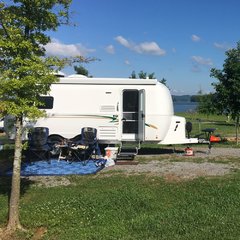


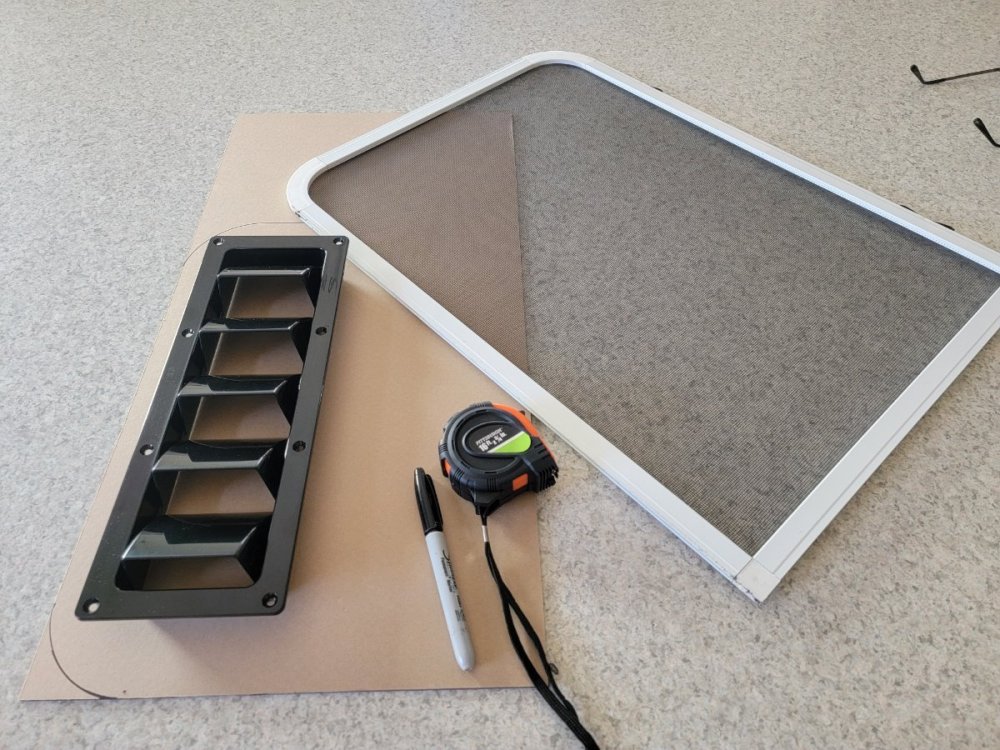
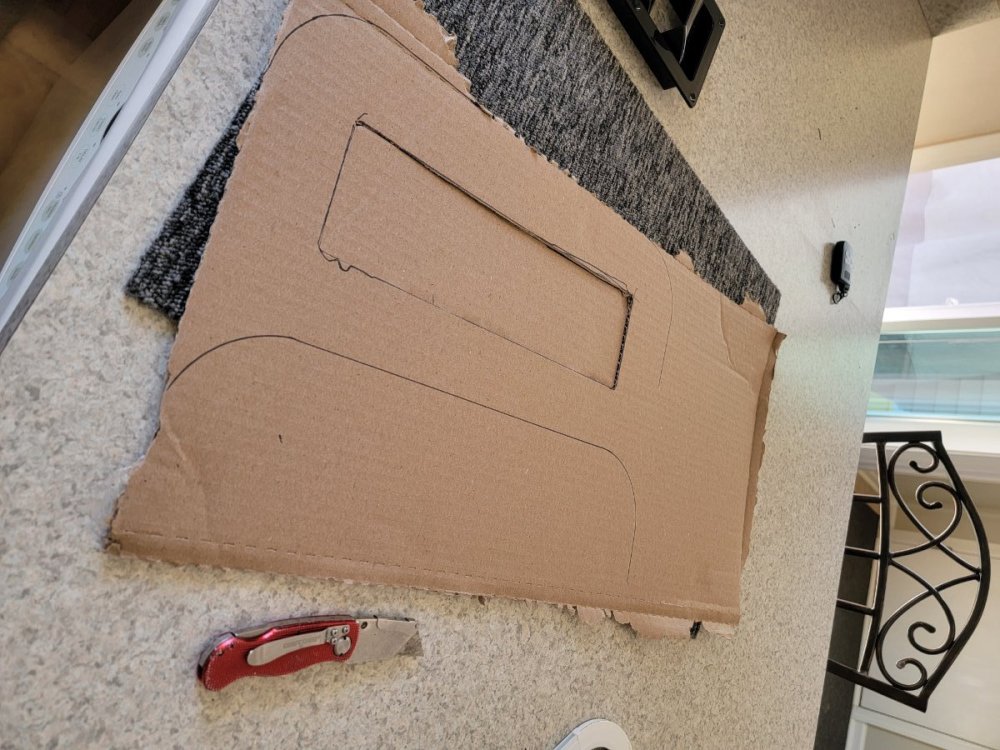
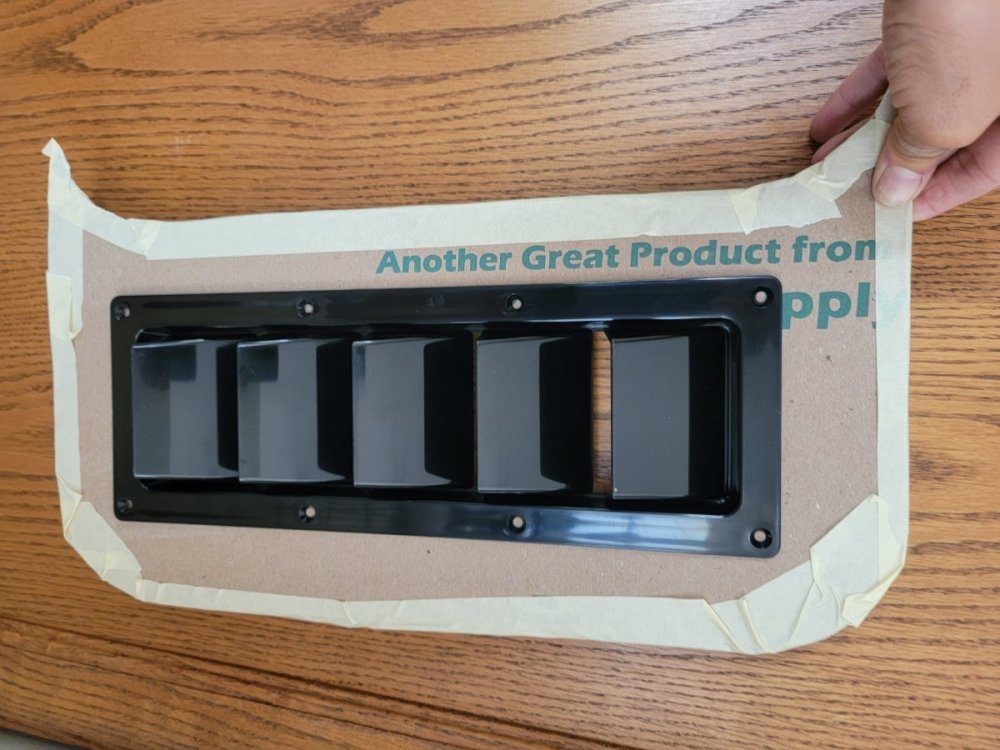
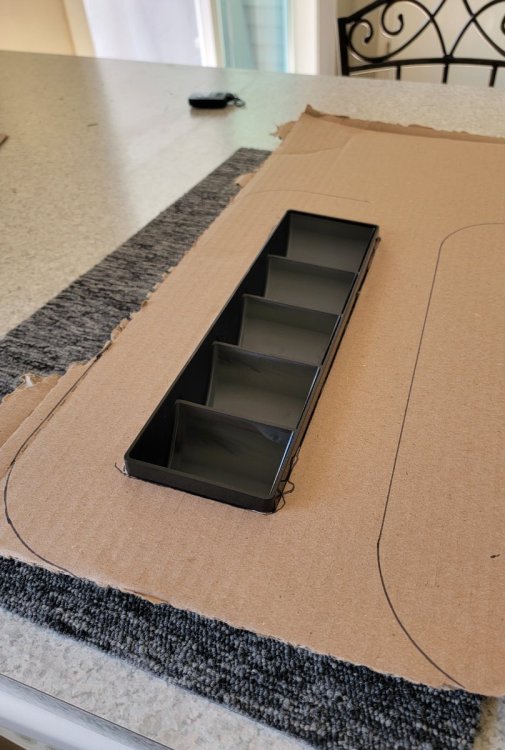
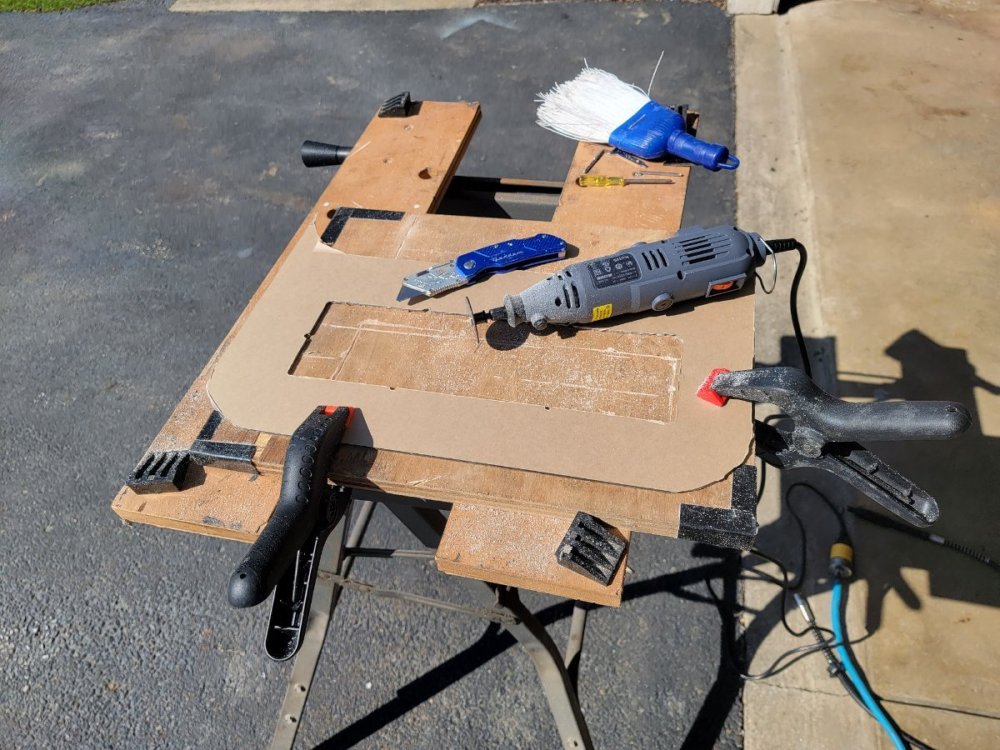
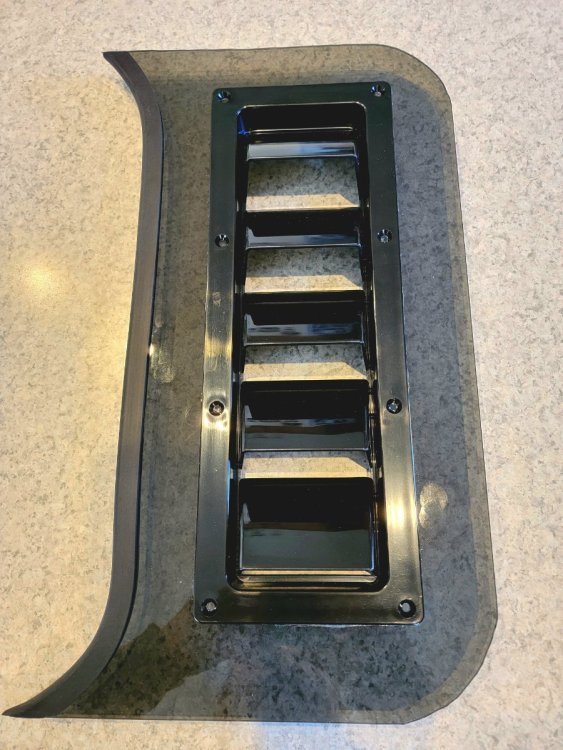

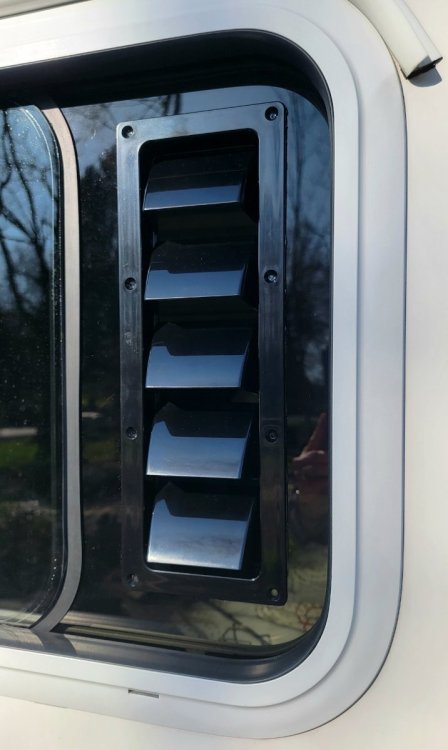
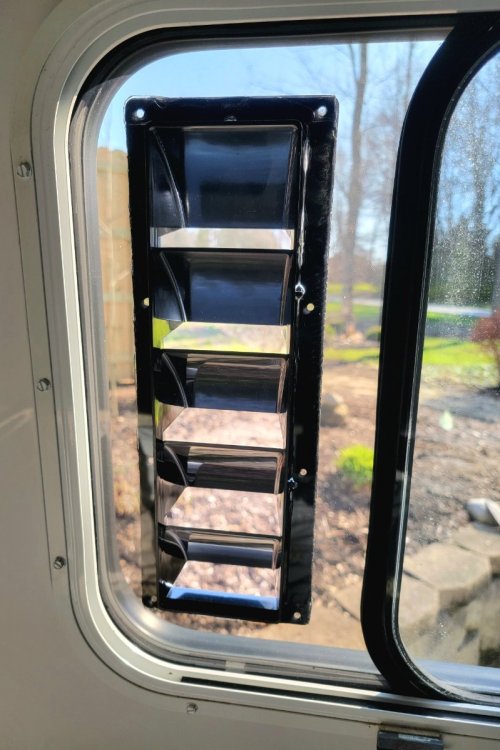
.thumb.jpg.002e5ee31fbd1b9d86c7b2fcc627dc92.jpg)
.thumb.jpg.662ee59e200188adaadf1ab0b9d51dbc.jpg)
.thumb.jpg.a6cd98ab829958ae44859f0cd29b4fc5.jpg)
.thumb.jpg.3750ab4b746b6f6831f190b278b94712.jpg)
.thumb.jpg.bdffd3a1f4bc37c78da91af9b1ccb47b.jpg)
.thumb.jpg.e253d249431e3a86e0f65e74de1e0de6.jpg)
.thumb.jpg.0fd751df5b8ba571f88e947b22073ed3.jpg)
.thumb.jpg.776c00dbdc5d72121c1a25db6eca1a16.jpg)
